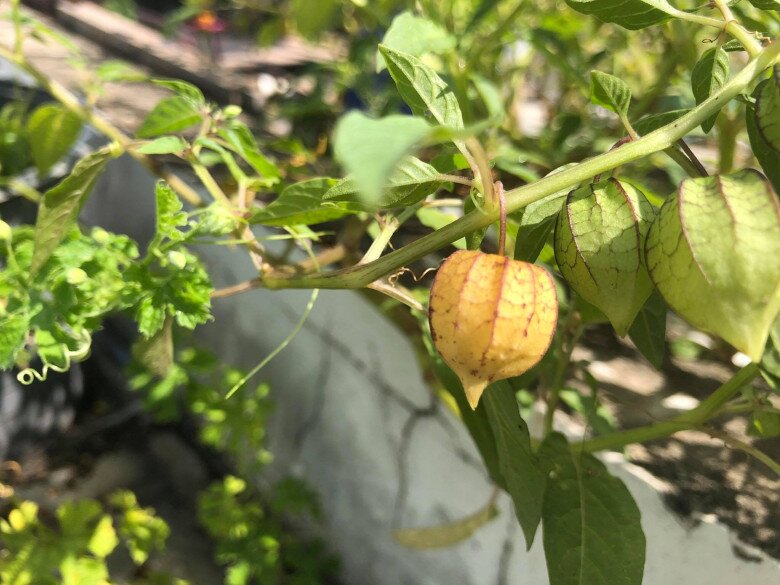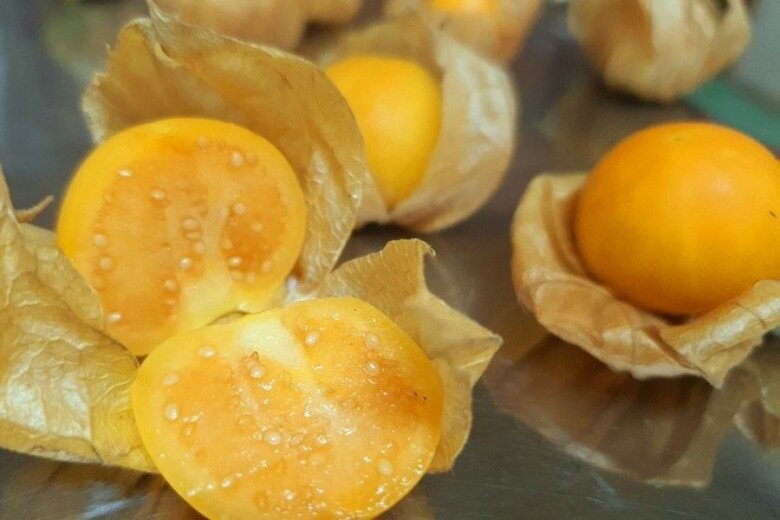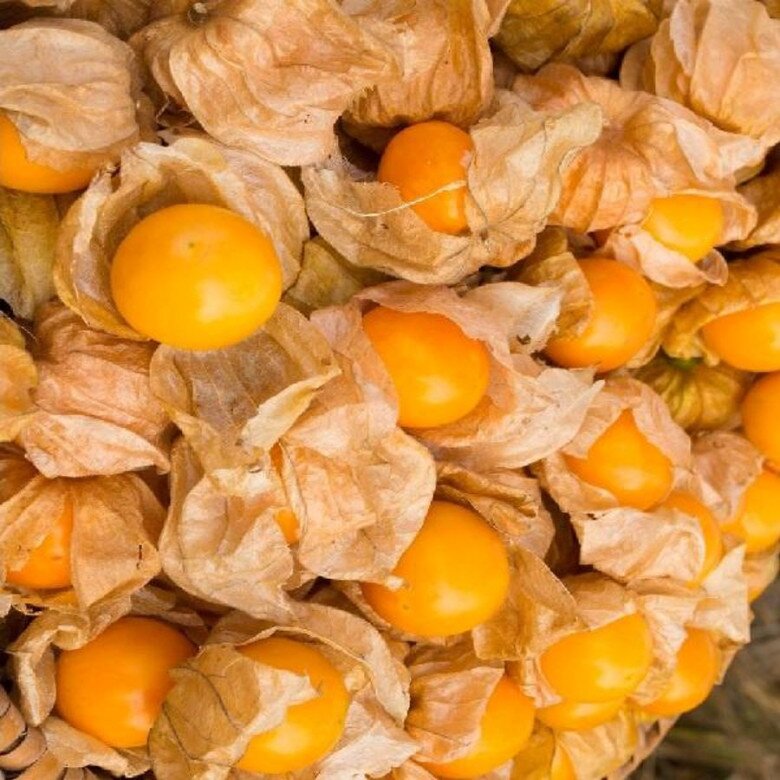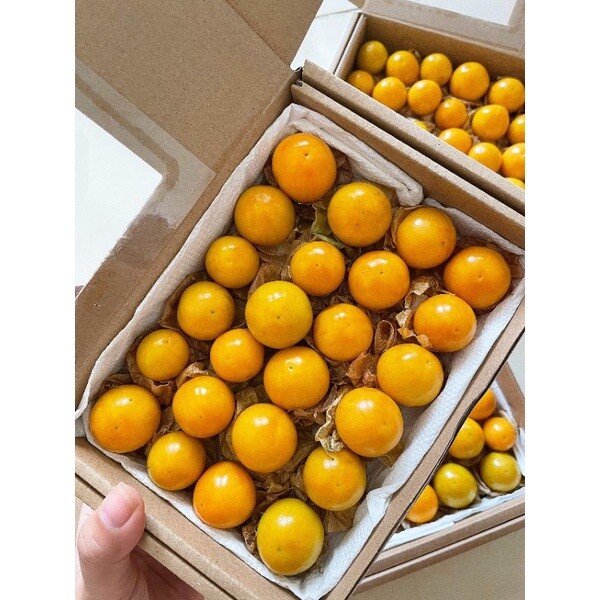
The golden berry, or Physalis, is undoubtedly a nostalgic fruit for many, evoking childhood memories.
In Vietnam, golden berries are intertwined with childhood recollections: summer afternoons spent running along rice fields, plucking ripe, golden fruits for a tangy-sweet treat. This humble fruit, with its balanced sweetness and slight tartness, captures the essence of carefree youth. In contrast, South America, the birthplace of Physalis peruviana, cultivates this fruit with precision, selecting the finest varieties and employing organic farming practices. The result is a vibrant, plump fruit with a sweet, fruity flavor reminiscent of strawberries, apples, and grapes, making it a coveted export to Europe, Japan, and the United States.

South American golden berries are larger, rounder, and juicier.
Nutritional Value: More Than Just a Tangy Treat
Nutritional studies reveal that South American golden berries are packed with essential vitamins and minerals:
Vitamin A: Significantly higher than cherries or blueberries, promoting eye and skin health.
Vitamin C: Boosts immunity and acts as a powerful antioxidant.
Vitamin B3 (Niacin): Supports energy metabolism and nervous system function.
Minerals (iron, calcium, phosphorus): Strengthen bones and joints, benefiting pregnant women.
Antioxidants: Protect the liver and kidneys, combating aging.
In traditional Vietnamese medicine, wild golden berries (Physalis angulata) are valued for their cooling properties, treating sore throats, coughs, and skin infections. Both traditional and modern medicine recognize the health benefits of this tiny fruit.

While in rural areas, golden berries are simply enjoyed fresh or used in young leaf soups, high-end restaurants transform South American golden berries into culinary masterpieces: Fresh Snack: A healthy, low-calorie treat. Dessert Decoration: The golden fruit, encased in its dry lantern-like husk, adds an artistic touch to wedding cakes, mousse cakes, and fruit tarts. Salads and Yogurt: Halved and mixed with lettuce, cheese, and olives, or paired with Greek yogurt. Jams and Smoothies: Crafted into jams or blended with mangoes and bananas for refreshing smoothies. Detox Drinks: Combined with oranges, passionfruit, and mint for a vitamin-rich, visually appealing beverage.
In South America, golden berry wine is a popular, fruity, light wine enjoyed during celebrations.
Commercial Value: From Wild Fruit to Luxury Item
In Vietnam: Wild golden berries grow abundantly in fields, rarely making it to markets. When sold, a bunch of young leaves costs only a few thousand dong.
Abroad: In Japan, a 100g tray of South American golden berries costs approximately 338 yen (~$2.50), or nearly $25 per kilogram. In Europe, prices range from €8 to €12 per kilogram, and in Vietnam, imported golden berries can cost up to $18–$22 per kilogram.
Beyond supermarkets, chefs seek golden berries for their aesthetic appeal. A single golden fruit, nestled in its delicate husk, offers both flavor and visual charm, making it a staple at upscale events.

The golden berry’s journey from wild plant to luxury product highlights a new opportunity: with careful cultivation, clean farming practices, creative processing, and effective marketing, even the humblest plants can become high-value products.
If purslane graces five-star restaurant menus and pennywort from local markets becomes trendy detox juice, why can’t Vietnamese golden berries become a specialty? Perhaps the question is whether we’ve truly recognized and invested in this “treasure by the roadside.”






























